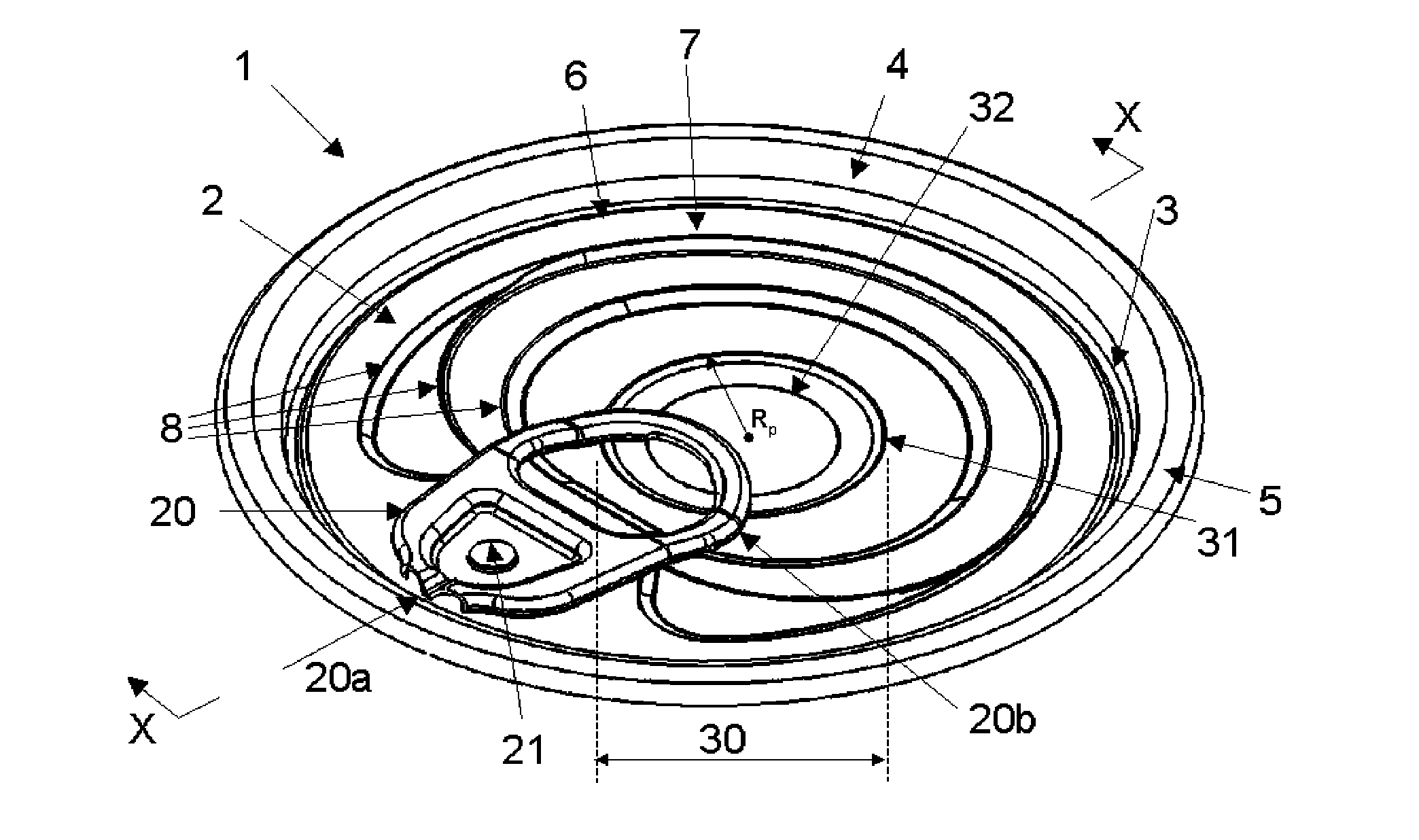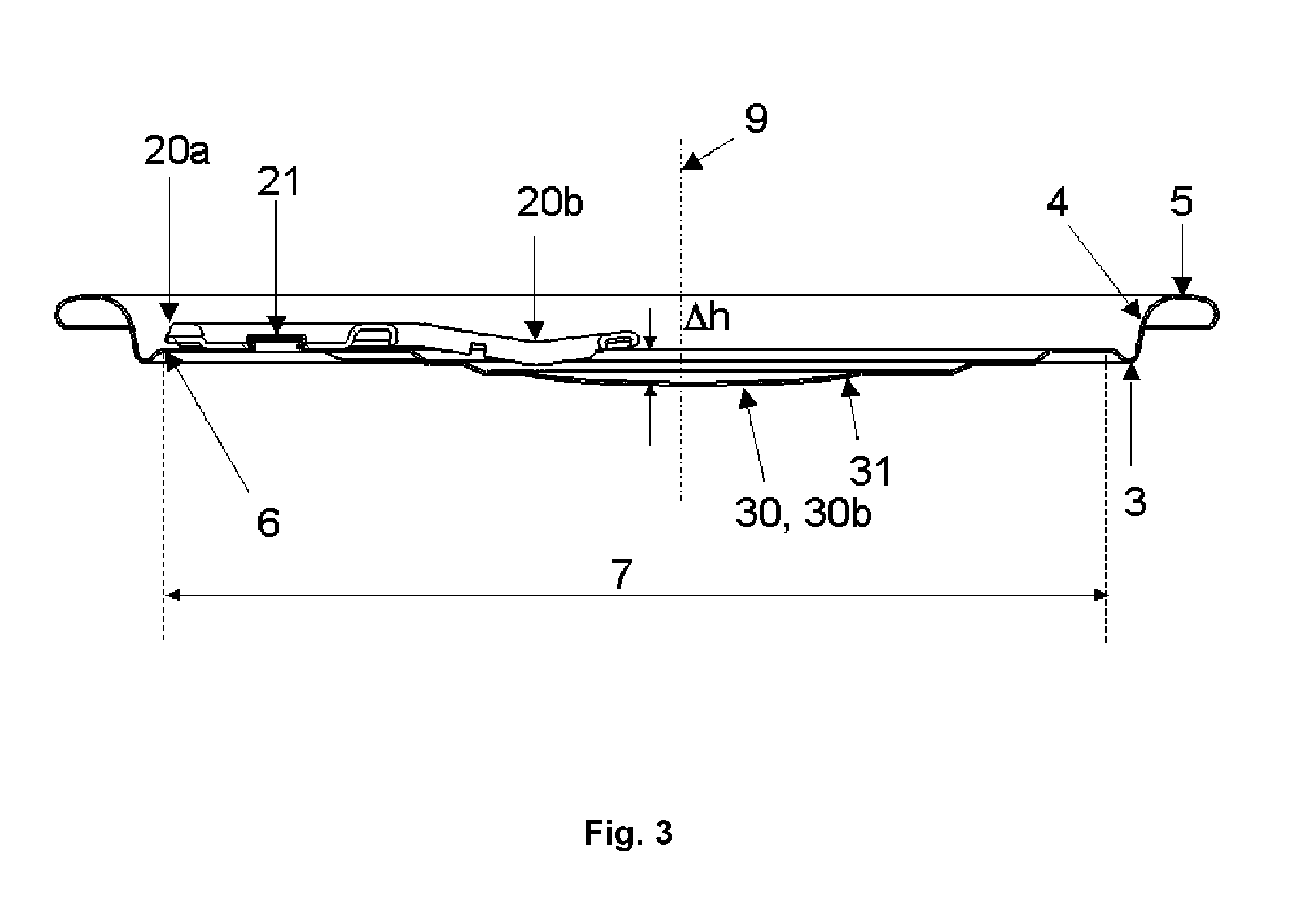Can end
a technology of can end and end, which is applied in the field of can end, can solve the problems of hindering tab access for consumers and hard for consumers to engage the tab with their fingers, and achieve the effects of reducing stiffening effect, reducing the force required to cause “pop-up”, and reducing the increase of pop-up pressur
- Summary
- Abstract
- Description
- Claims
- Application Information
AI Technical Summary
Benefits of technology
Problems solved by technology
Method used
Image
Examples
Embodiment Construction
[0043]FIG. 1 shows can end 1. In the embodiment shown, the can end 1 is formed of 0.21 mm gauge DR550N material. The can end 1 has a central panel 2 with a countersink 3 at its periphery. The countersink 3 extends upwardly into a chuck wall 4, with the chuck wall extending radially outwards to form a seaming panel 5. A circular score line 6 is formed in the can end 1, defining an openable panel portion 7 inwards of the score line. The score line 6 (once severed) defines an aperture through which product (not shown) is dispensed, with the openable panel portion 7 being completely detachable from the can end 1. Beading 8 is provided on the central panel 2 for the purpose of strengthening the central panel 2.
[0044]A tab 20 is attached to the central panel 2 by means of a rivet 21. One end of the tab 20 is provided with a nose portion 20a situated adjacent to the score line 6. The opposite end of the tab 20 is provided with a handle portion 20b in the form of a ring.
[0045]A moveable por...
PUM
 Login to View More
Login to View More Abstract
Description
Claims
Application Information
 Login to View More
Login to View More - R&D
- Intellectual Property
- Life Sciences
- Materials
- Tech Scout
- Unparalleled Data Quality
- Higher Quality Content
- 60% Fewer Hallucinations
Browse by: Latest US Patents, China's latest patents, Technical Efficacy Thesaurus, Application Domain, Technology Topic, Popular Technical Reports.
© 2025 PatSnap. All rights reserved.Legal|Privacy policy|Modern Slavery Act Transparency Statement|Sitemap|About US| Contact US: help@patsnap.com



